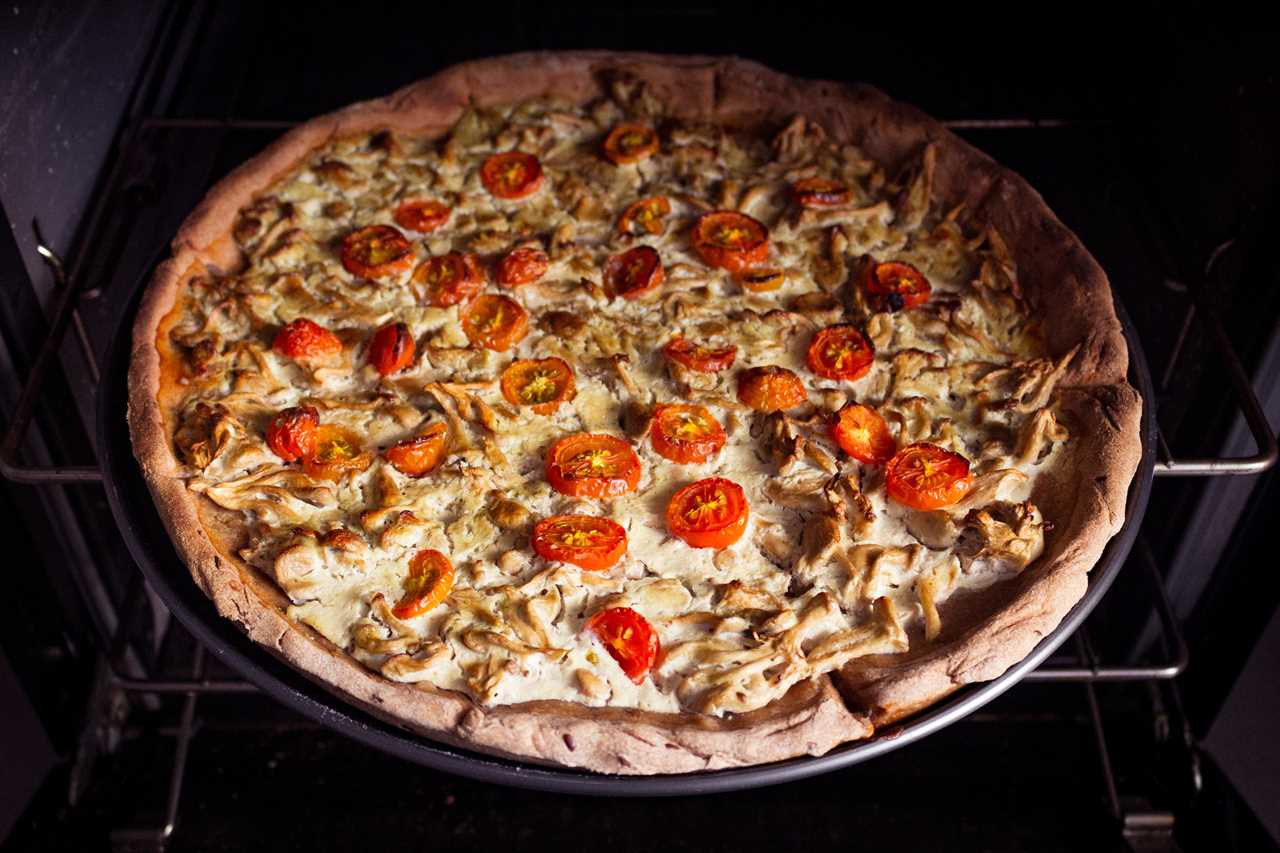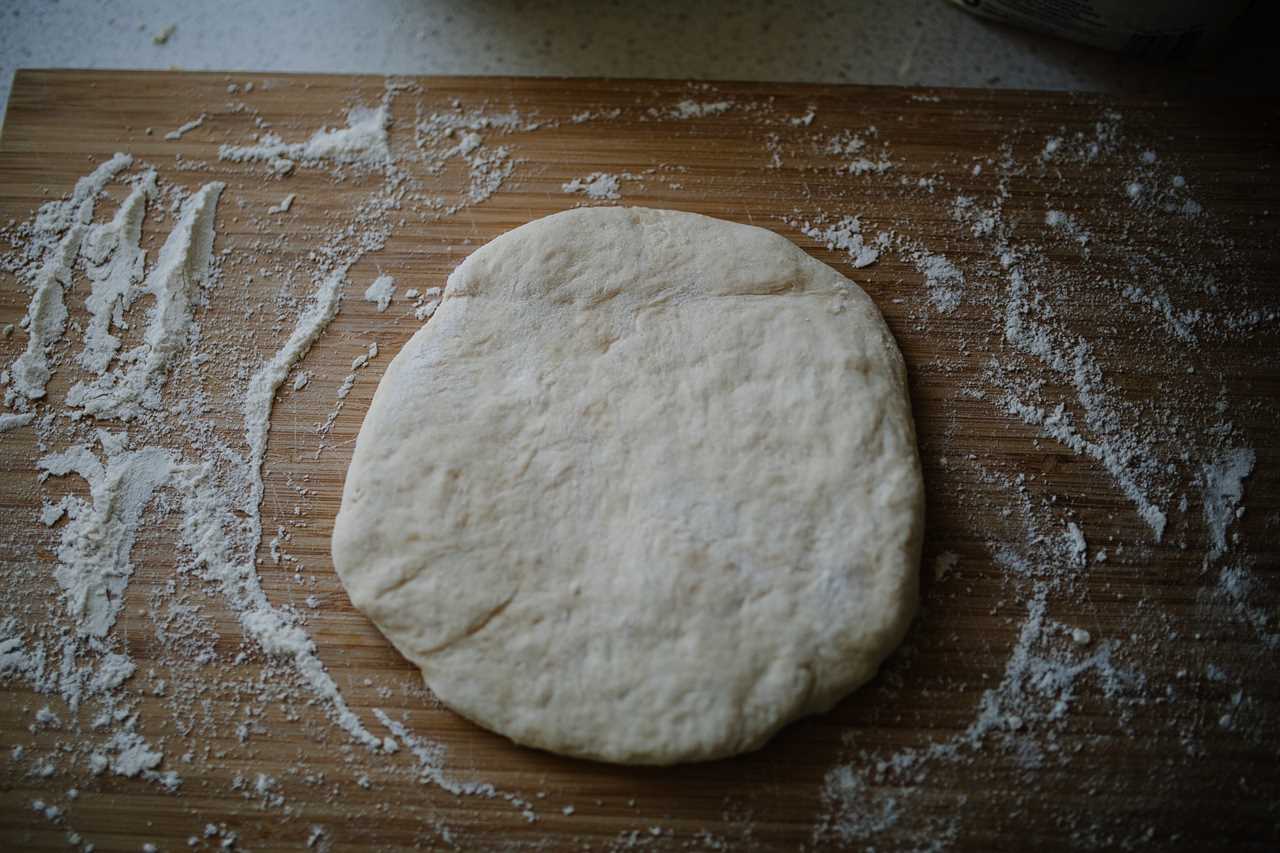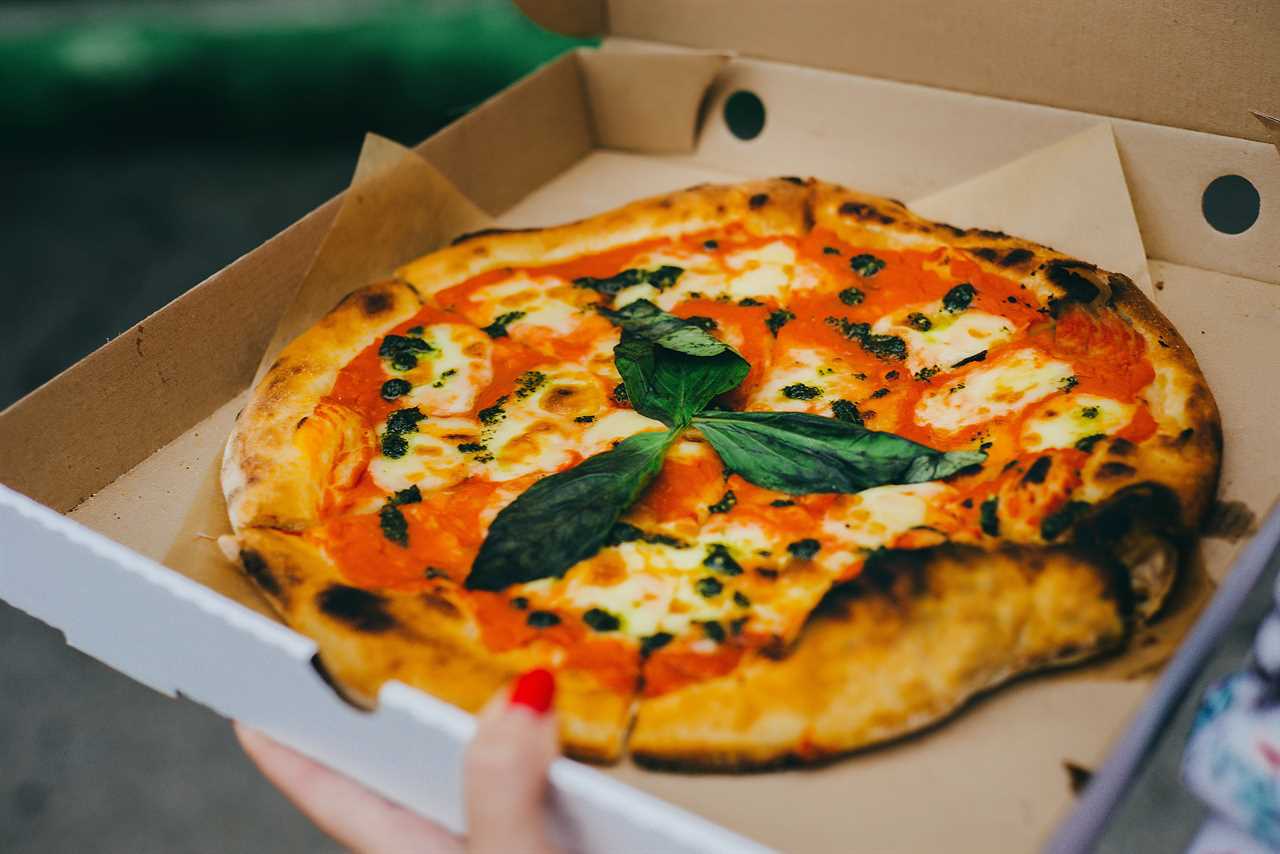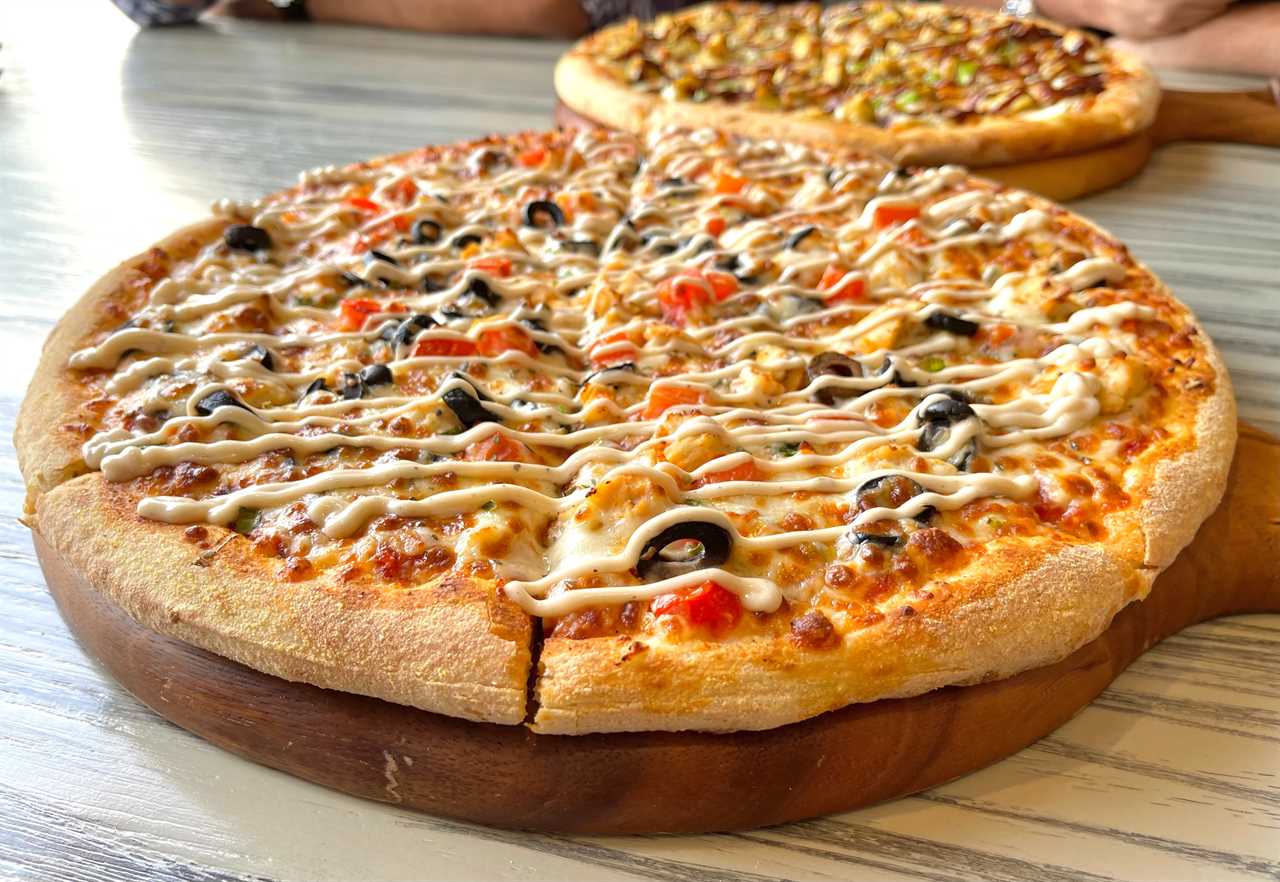Looking for the perfect Italian pizza dough recipe? Look no further! This quick, easy, and versatile recipe will have you making mouthwatering pizzas in no time.
Whether you prefer making the dough by hand, using a food processor, or a Kitchen Aid Mixer, this recipe has got you covered. With its thin and crispy crust that still maintains a slight chewiness, it’s the ideal base for your favorite toppings.
Plus, it’s naturally vegan and can be used to make other delicious dishes like garlic knots, Stromboli, and calzone.
So why wait? Let’s dive into the world of Italian pizza dough and unleash your creativity in the kitchen!

Key Takeaways
- The Italian pizza dough recipe is quick and easy to make by hand, food processor, or Kitchen Aid Mixer.
- The dough is made with active dry yeast, flour, and COLD water, with no proofing required.
- The crust is thin and crispy, yet still a little chewy.
- The dough can be made ahead and refrigerated or frozen for later use, and it is naturally vegan.
The Importance of Using Cold Water in Italian Pizza Dough
Using cold water in Italian pizza dough is essential for achieving a thin and crispy crust with a slight chewiness. The temperature of the water plays a crucial role in activating the yeast and ensuring proper fermentation.
When warm water is used, it speeds up the fermentation process, resulting in a dough that rises too quickly and lacks the desired texture. Cold water, on the other hand, slows down the fermentation, allowing the dough to develop complex flavors and a light, airy structure.
The yeast, a key ingredient in Italian pizza dough, feeds on the sugars in the flour and produces carbon dioxide, which creates bubbles and gives the dough its characteristic rise. By using cold water, the yeast is given the time it needs to work its magic and create a perfectly balanced crust that is crispy, yet chewy.
Exploring Different Methods for Making Italian Pizza Dough
When exploring different methods for making Italian pizza dough, one can try cooking the pizza on a grill or using a high heat wood oven. Both methods offer unique advantages and can result in delicious pizzas. Cooking pizza on a grill gives it a smoky and charred flavor, while the high heat wood oven creates a crispy and blistered crust.

However, one method that stands out is slow fermenting the dough for more flavor. By allowing the dough to ferment in the refrigerator for 2-3 days, the flavors develop and deepen, resulting in a more complex and tasty pizza. This method requires patience, but the end result is worth it.
The slow fermenting process allows the dough to become lighter and airier, resulting in a crust that is both chewy and crispy. So, when making Italian pizza dough, don’t forget to explore the benefits of slow fermenting for a truly flavorful experience.
Tips for Achieving a Thin and Crispy Crust With Italian Pizza Dough
To achieve a thin and crispy crust with their Italian pizza dough, one can try baking the pizza at a high temperature for a shorter amount of time. This method allows the dough to cook quickly while still retaining its chewy texture.
However, there are additional tips that can help achieve the desired result:

-
Slow fermentation: Slow fermentation is a technique that involves allowing the dough to rest for a longer period of time, typically overnight or up to 72 hours. This process develops the flavors in the dough and creates a chewier texture.
-
Proper hydration: Ensuring that the dough is properly hydrated is crucial for achieving a chewy texture. Adding the right amount of water to the dough helps create gluten strands that give the dough its elasticity.
How to Make Ahead and Store Italian Pizza Dough for Future Use
One convenient method for preparing and storing Italian pizza dough for future use is by making a large batch and dividing it into individual portions before refrigerating or freezing them. This allows for easy access to homemade pizza dough whenever the craving strikes.
When it comes to kneading techniques, there are various methods to explore. Some prefer the traditional hand kneading method, while others opt for the convenience of a food processor or Kitchen Aid Mixer.

The science behind pizza dough fermentation is fascinating. Fermentation is a crucial step in the dough-making process, as it allows the yeast to break down the sugars and release carbon dioxide, which creates those airy pockets and adds flavor to the crust. Understanding the fermentation process helps in achieving a perfect rise and texture in the dough.
Vegan Options: Italian Pizza Dough for Garlic Knots, Stromboli, and More
The vegan options for using this Italian pizza dough include creating delicious garlic knots, Stromboli, calzone, focaccia, breadsticks, and cooking in an outdoor pizza oven.
When it comes to vegan substitutions, there are plenty of alternatives to traditional toppings that can be used to enhance the flavors of these dishes.
For garlic knots, try using vegan butter and garlic powder to create a rich and savory taste.

For Stromboli and calzone, fill them with a variety of vegetables such as bell peppers, mushrooms, and spinach for a burst of freshness.
When making focaccia, top it with sliced tomatoes, olives, and fresh herbs for a Mediterranean twist.
And for breadsticks, sprinkle them with vegan cheese and Italian seasoning for a satisfying snack.
The possibilities are endless when it comes to veganizing these Italian classics, allowing for a world of freedom in the kitchen.

Choosing the Right Flour for Authentic Italian Pizza Dough
An organic unbleached all-purpose flour is ideal for achieving an authentic Neopolitan crust in Italian pizza dough. This type of flour provides the perfect balance of protein and gluten, resulting in a fluffy and tender crust. When choosing the right flour for a fluffy pizza crust, it is important to consider the hydration levels in the dough. Hydration refers to the amount of water relative to the amount of flour used in the dough. A higher hydration level will result in a more moist and airy crust, while a lower hydration level will yield a denser and chewier crust. By exploring different hydration levels in Italian pizza dough, you can customize the texture of your crust to suit your preferences.
To provide a visual representation of the different hydration levels, here is a table showcasing the recommended ratios:
| Hydration Level | Water (by weight) | Flour (by weight) |
|---|---|---|
| Low | 50-55% | 100% |
| Medium | 60-65% | 100% |
| High | 70-75% | 100% |
| Very High | 80-85% | 100% |
Experimenting with different hydration levels will allow you to find the perfect balance between a fluffy and chewy crust. Whether you prefer a light and airy texture or a more substantial bite, choosing the right flour and adjusting the hydration level will help you achieve the desired result. So go ahead and explore the possibilities to create your perfect Italian pizza dough.
Freezing and Defrosting Italian Pizza Dough: A Step-by-Step Guide
To freeze and defrost Italian pizza dough, simply shape the dough into balls and place them in a freezer-safe bag. Thaw the dough in the refrigerator when ready to use.

This freezing technique allows for the convenience of having pizza dough on hand whenever the craving strikes.
When exploring different freezing techniques, it’s important to consider the quality of the dough after defrosting. Some methods may result in a loss of texture or flavor.
Comparing different defrosting methods can help determine the best approach. Thawing the dough in the refrigerator ensures a slow and even thaw, preserving the dough’s integrity and preventing any unwanted changes in texture.
Bringing the dough to room temperature before cooking allows for even baking and a crispy yet chewy crust.

Grilling Pizza: A Unique and Delicious Cooking Method
Grilling pizza is a unique and delicious cooking method that adds a smoky flavor and enhances the overall taste of the pizza. Compared to traditional baking, grilling pizza offers a charred and crispy crust with a slightly chewy texture. The high heat of the grill cooks the pizza quickly, resulting in a perfectly cooked dough that is thin and flavorful.
When grilling pizza, it is important to oil the grill grates and preheat the grill to a high temperature. The hot grill creates a sear on the dough, giving it a beautiful charred appearance. The direct heat from the grill also melts the cheese and toppings, creating a delightful combination of flavors.
Grilling pizza can be a great alternative to traditional baking, especially for those who enjoy the smoky and charred taste that grilling imparts. It offers a unique and exciting way to enjoy homemade pizza while adding a touch of outdoor cooking to the experience.
Achieving Perfectly Cooked Pizza in a High Heat Wood Oven
Achieving perfectly cooked pizza in a high heat wood oven requires a few key steps. First, the dough needs to be thinly stretched. This allows it to cook quickly in the intense heat, resulting in a crispy crust with a slight chewiness.

Next, a slow fermentation process in the refrigerator for 2-3 days is essential to enhance the flavor. This technique allows the dough to develop complex flavors and a light, airy texture. The slow fermentation process also helps to create a more digestible and flavorful dough.
During fermentation, the yeast breaks down the starches in the flour, releasing sugars and producing carbon dioxide. This creates air bubbles in the dough, giving it a light and airy texture. Additionally, the slow fermentation process develops the gluten in the dough, giving it strength and elasticity.
Gluten-Free Adaptations: Experimenting With Italian Pizza Dough
Experimenting with gluten-free adaptations of the Italian pizza dough has yielded promising results. One commenter successfully made the dough gluten-free by substituting regular flour with gluten-free flour options, such as almond flour, rice flour, or a gluten-free flour blend. These alternative flours provide a suitable texture and taste for those with gluten sensitivities or dietary restrictions.
It is important to note that the dough may require additional binders or ingredients to ensure proper rise and structure. However, with the right adjustments, gluten-free pizza dough can be just as delicious as its traditional counterpart.

Furthermore, gluten-free pizza dough can be used for more than just pizza. It can be transformed into delicious gluten-free bread, allowing individuals to enjoy a variety of baked goods while maintaining their dietary needs.







